Type City, bar name or keyword...
Meet The Maker: Hans Martin Hansgaard, Stauning Whisky
Move over, Scotland. Take a seat, Japan. Hey Ireland, step aside, pal. Denmark is stepping up the plate when it comes to epic whisky production, and we reckon it's about to hit it out of the park. We virtually met up with a few of the makers of Stauning Whisky for an awesome tasting and tour around Denmark's first-ever whisky distillery to find out exactly how this awesome liquid came to be.
Tell us about yourself and your team – we hear there are 9 founders, that’s a lot of brains – how and why did you all come together to launch the Stauning Whisky Distillery and what do the 9 brains each bring to the operation?
Stauning Whisky was founded in 2005, and it all started from a radio show! On the show, there was this statement, which was that “it’s very easy to make whisky, it’s only three ingredients. But, it’s very difficult to make good whisky.“
Well, it was a lightbulb moment. We have an abundance of all the ingredients needed to make whisky here in Denmark, especially in Jutland, where Stauning is made. It’s very similar to Scotland. Martin, one of the founders, thought “we have everything we need right here, why is no one making whisky in Denmark?”.
So, he rang friends and family, and we all did the same, and we got a group of about 13 or 14 people together who we thought might like to start this hobby. After a few conversations it ended up as a group of 9, and we all make up the founders of Stauning as you know it today.
All of us come from different backgrounds. Some of us are family, some of us good friends. We have four engineers, a helicopter pilot, a doctor, a teacher (that’s me!), a chef and a butcher. We have different skillsets and different approaches. We each make Stauning what it is, in our own unique ways.
So you guys are based in Denmark. Tell us about your home town and what do you love about living there?
Five of us grew up in Stauning, or around Stauning, and though we’re all in different parts of the country now, it is the home of our distillery. It’s a wonderful part of Denmark, and everything we use to make our whisky comes from there, and this is hugely important to the character, and the flavour of our whisky.
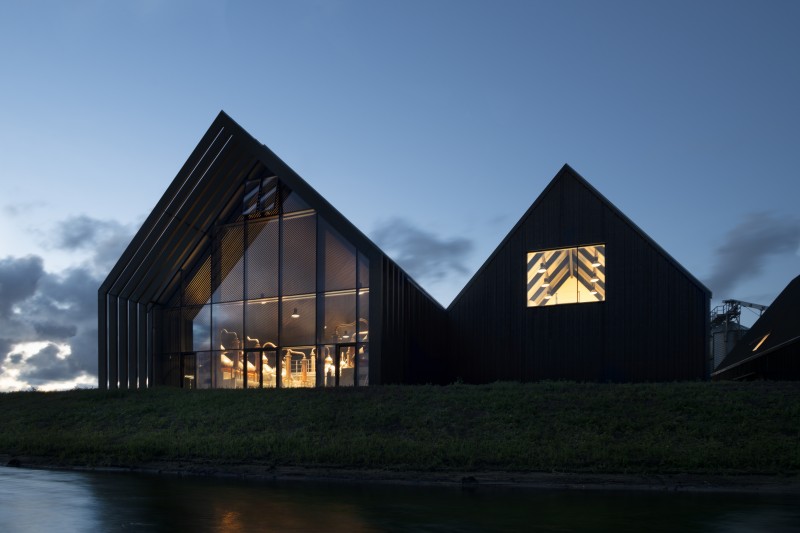
What influence do your surroundings have on the liquids you make? What makes your whisky uniquely Danish?
Stauning has its very own terroir. The village of Stauning turned out to be an amazing place to make whisky – it’s a rural area with lots of farmland so all of the crops we need are grown there. It’s a coastal area, very close to the North Sea which affects the character of our whisky. Our water is incredibly clean and pure, as Stauning doesn’t have a huge population, nature dominates it, so there’s very little pollution – the water is superior to most other regions in Denmark – and this is key to making good whisky; having good water.
At the same time as the Nordic food movement began to take hold in Denmark and across Europe, we were creating whisky with the same principles – using only local produce and distilling it into whisky. We’ve essentially distilled the flavours and character of the West Coast of Denmark into every sip.
We were also the first people to make whisky in Denmark in a long time. It hadn’t been done for nearly 70 years. There is a few others now, but we were the first.
If we were going to spend a long weekend in Denmark, what shouldn’t we miss? Where will we find the best bars? Where do you go when you want a cocktail?
Well, you can’t go to Denmark without going to Copenhagen – it’s an amazing city with fantastic places to eat and drink. If you were to go to Copenhagen then you must visit Noma, Alchemist and Germanium, and don’t forget to ask for a dram of Stauning whilst you’re there!
For a long weekend outside of the city, then naturally you must come to Stauning and see our distillery. We host distillery tours regularly – we actually have about 20,000 visitors every year – though if BarChick were coming by we’d host an extra special private tour just for you.
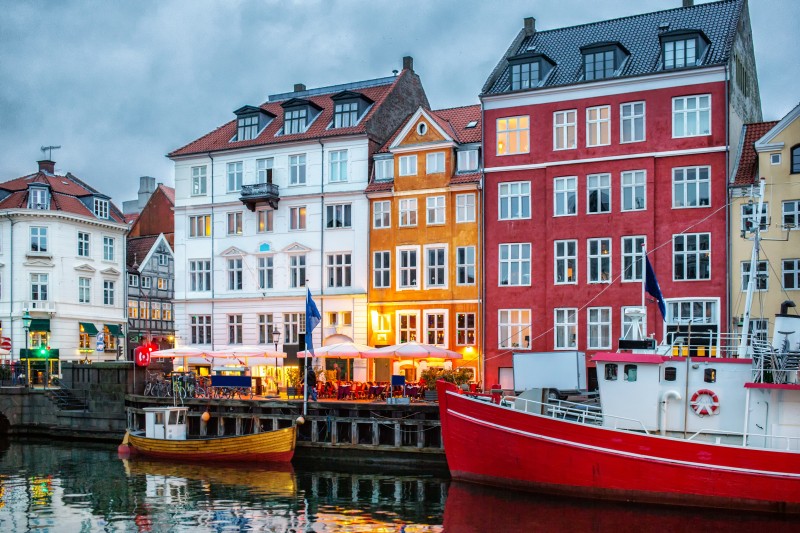
If you could teleport to any bar in the world, where would you be zooming off to?
There are so many to choose from, so many wonderful bars to name, but if I had one choice, I would visit Brussels and go to an old Lambic bar. Lambic is a Belgian beer, it’s fantastic, and there are lots of these very small, very traditional bars in and around Brussels which serve Lambic beer fresh from the cask. If I could go anywhere right now, that’s where I’d go.
So you currently have Rye, KAOS Triple Malt and Peat in your whisky family – is it going to be expanding?
Absolutely – we have a Research Series which includes two whiskies – Curious and Bastard – and we’re adding another…though we can’t tell you everything about that just yet!
We have also recently merged two of our products – our Heather smoked whisky, and Peat – into one whisky which will be known as Smoke. Peat will become a limited edition and Smoke will take its place.
We’re always experimenting and learning and bit by bit our family will certainly grow.
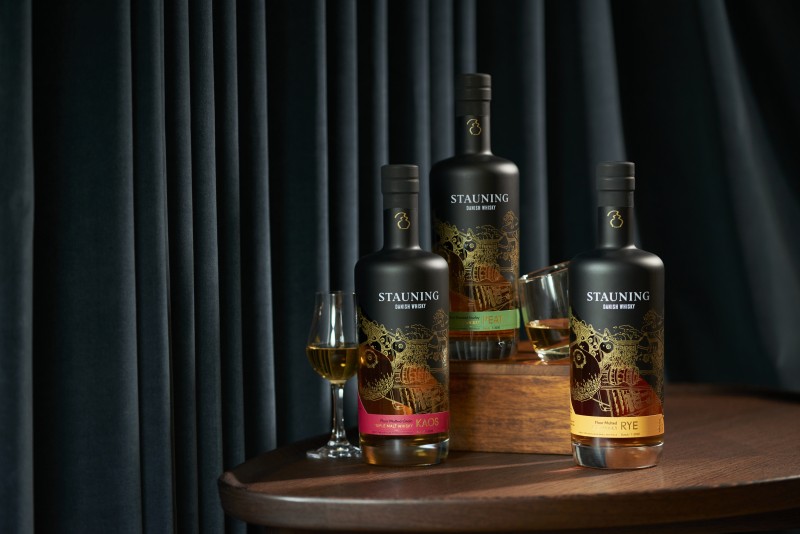
You like to experiment with the casks you age your whisky in, right? What’s been the most interesting result from these experiments so far? And what are you gonna try next?
We do, it’s part of who we are. The most interesting result we’ve had so far is ageing our Rye whisky in vermouth casks. It’s like a Manhattan on steroids. But again, we can’t tell you too much about that just yet! But stay tuned…
Something else we’re thinking about is if we could create a cask smoked whisky. We mostly use first fill casks, so once we’ve used them once we tend not to use them again, so we’ve been thinking what it might be like to use casks wood to smoke whisky with, and what sort of wonderful flavours this could produce. It’s just an idea at the moment, but a fun one to think about.
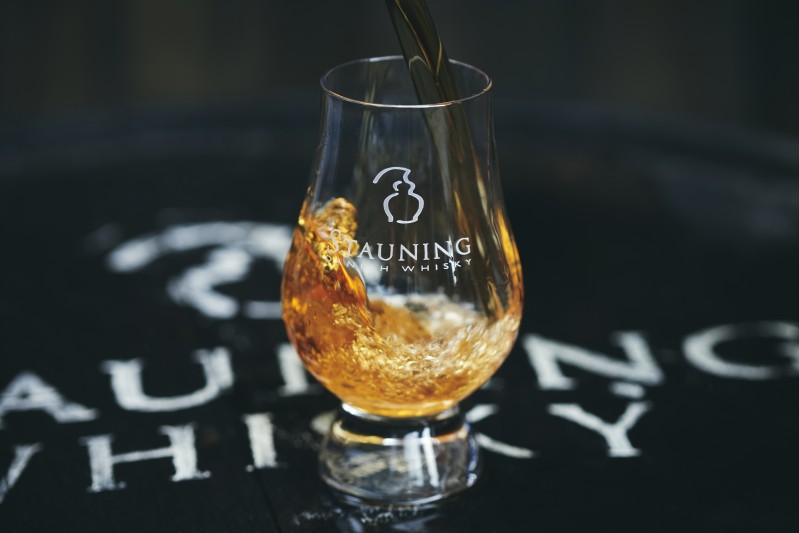
Do you have a favourite cocktail to use your whiskies in? What food do they work well with?
A lot of people shy away from using whisky in cocktails as they’re worried about messing with such a premium spirit. But we think that if you use good quality ingredients to match the quality of the whisky, you can’t wrong.
One of the best for us is the Manhattan. All of our whiskies are so different, and so unique, that each one makes a Manhattan totally different to the rest. Then you can start experimenting with different bitters and vermouths, so it always evolves. It’s a really interesting cocktail, and we think it matches our whisky well in this way.
Highballs are good too – they’re having a bit of a moment right now, but we think they can still go further. If you use great quality ice and highly carbonated soda water, it brings out flavours in our whisky you never knew where there when tasting it neat.
When pairing with food, KAOS and Curious, from our Research Series, pair very well with traditional Danish food, like the Danish open sandwich, when served neat. They are made with rye, barley, water and yeast, like rye bread, and they’re smoked, so go hand in hand with a Smørrebrød.
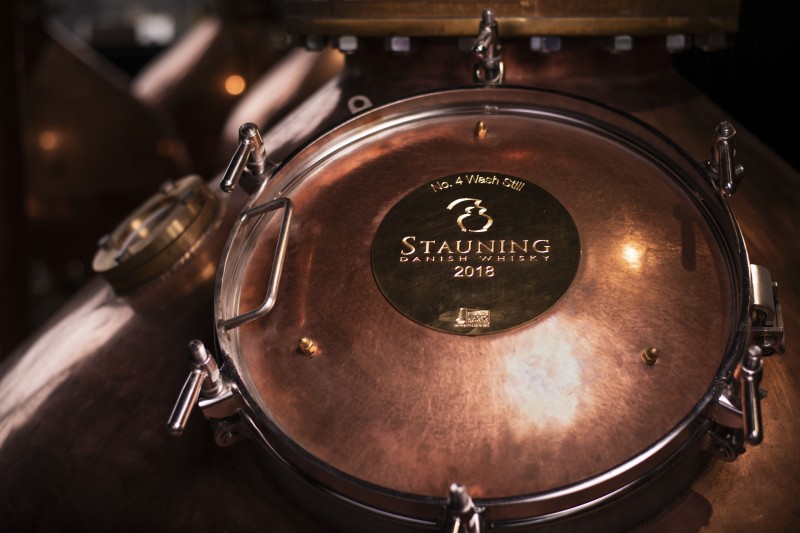
And tell us about your bottle designs – they used to look a little bit different, didn’t they? Why the change, and what was the inspiration for the looks?
Stauning has a really interesting story to tell, but we didn’t want to just write this on the bottle. For one, it’s a long story, and we knew that there was a better, more interesting way to tell it. We wanted it to capture three things: the people, the place, and our story. The illustration features each of the us (the nine founders) and the unique production methods we use to make Stauning. Our 24 small, direct-fired copper stills feature, as well as several curious stories from our past and present. The angled black section that wraps around the bottle represents the sloping, burnt-timber roof of our new distillery, which is also a nod to the fisherman huts found here on the west coast.
We wanted our bottle to be worthy of the whisky within it, and we’re so proud of it.
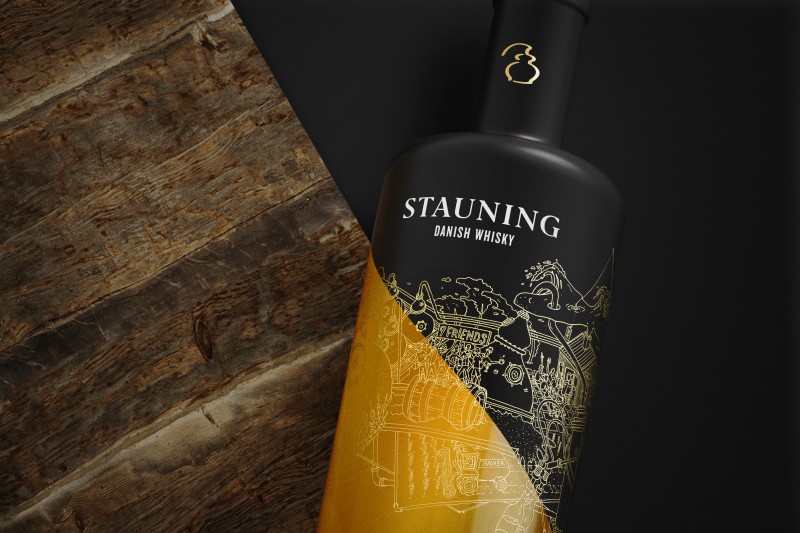
Your distillery is beautiful, and you’re utilising some really old techniques in whisky production like smaller stills and floor malting. What was the reason behind that?
It all goes back to when we started – we made rules for ourselves. We knew we wanted to only use local ingredients, and we had looked at the traditional techniques used in Scotland before industrialisation took over. Everything we read told us about floor malting and using classic methods like open fire under the pot stills. We couldn’t leave these principles behind even when we grew – they’re part of who we are. We decided that if we were going to make more whisky, we wouldn’t buy bigger stills, we’d buy more small ones, and now we have 24! It’s a dogma, it’s us.
What does a working day look like for you?
As there are nine of us, there isn’t really a normal working day for us across the board. Also, this all started as a hobby, so other than one of us who used to make the whisky in the weekdays, for the rest of us it was a weekend thing. For a while we weren’t even spending our time making whisky, but painting, building, and installing everything in our distillery in 2007.
Now, obviously, things are different, but as we’re all involved in different parts of the business, and based in different parts of Denmark, a typical working day varies for all of us. For me, it involves tastings, talking to retailers and places that we want to stock Stauning, and staying informed on how trends are developing, not just in the whisky scene, but the food scene too.
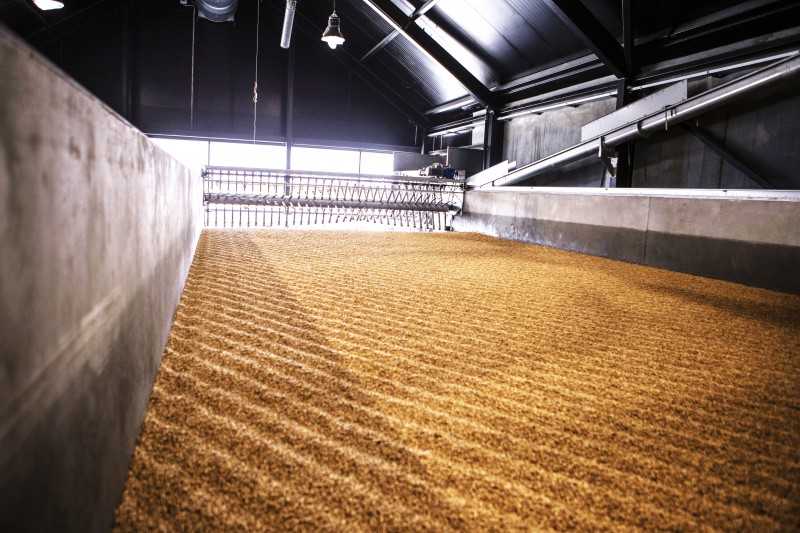
What has been the biggest challenge producing & launching your whisky?
For us, the biggest challenge is probably that whisky is still often associated with a more old-fashioned audience, and we don’t adhere to those traditional stereotypes. If we were a gin, or a rum, it would be different. But whisky is usually associated with age to determine quality, and we’re young. Our whiskies are 3-6 years old, and we like it that way. Ageing them more would take away
from their characters. It’s a challenge, but it’s one we can, and are, overcoming. Think of Stauning as the Pinot Noir or Gamay of whiskies. Fruity, fresh, vibrant and full focus on raw materials and their natural flavours.
What are Stauning’s greatest achievements so far?
We’re so proud of being the first people to make whisky in Denmark for such a long time, and of our new distillery – we think is beautiful. It’s very Nordic – it has this juxtaposition of being very slick and sharp on the outside, and the inside it has warm colours and soft round shapes.
I think though, what we’re most proud of, is that through everything, every challenge and every success, we’ve stuck to our values, and never lost what makes Stauning so special.

What's the coolest or craziest fact you can tell us about your whisky?
We love the story behind the name of KAOS. KAOS is a mashup of Stauning malted Rye and smoked and non-smoked Single Malt whiskies; it is a complex and versatile spirit, you could even say a bit chaotic! It takes its name from Danish history, when Thorvald Stauning used the phrase “Stauning or Chaos” to win re-election as Prime Minister in 1935. Well, with us, you can have both – Stauning and KAOS.
We LOVE that. The KAOS might just be our fave now... Has there been anything that you think has made a huge impact in your business or product?
Since we consider ourselves as a New World distillery we are not bound by Scottish or American whisky-making laws. We have a huge respect for traditional whisky-making, but we can pick and choose from what we believe in and what makes the most sense to us. This means that we can use whatever casks we find interesting and flavourful and that we combine Old World methods with The New Nordic movement and methods that makes our whiskies as interesting as possible. It´s good to be different.
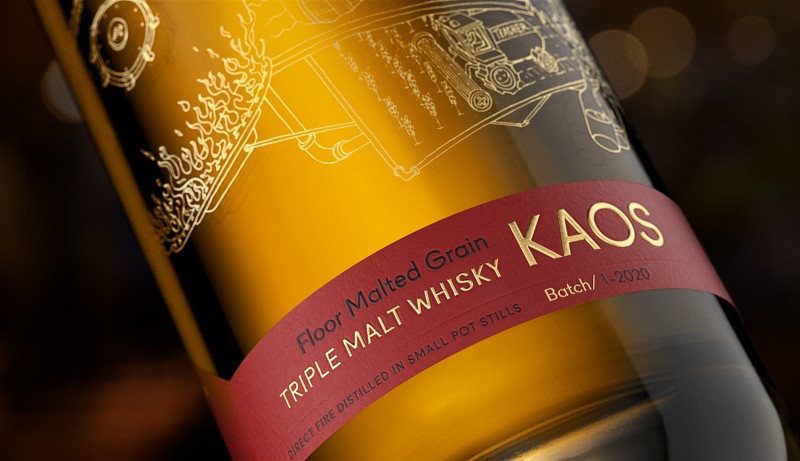
What does the future look like for you, the team and your brand? What is on the horizon for Stauning?
The biggest thing for us is making more whisky, releasing bigger batches, and slowly taking over the world, bit by bit! We’re reaching a limit of what we can sell in Denmark, as we’re pretty much stocked everywhere now, so as well as launching into the UK, we’re expanding into Germany, France, Belgium, Switzerland and the US.